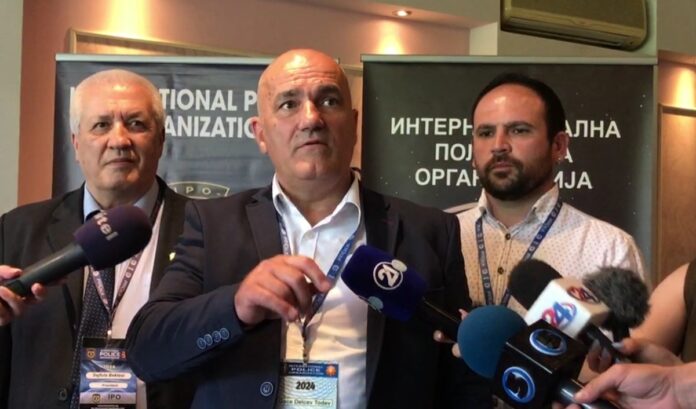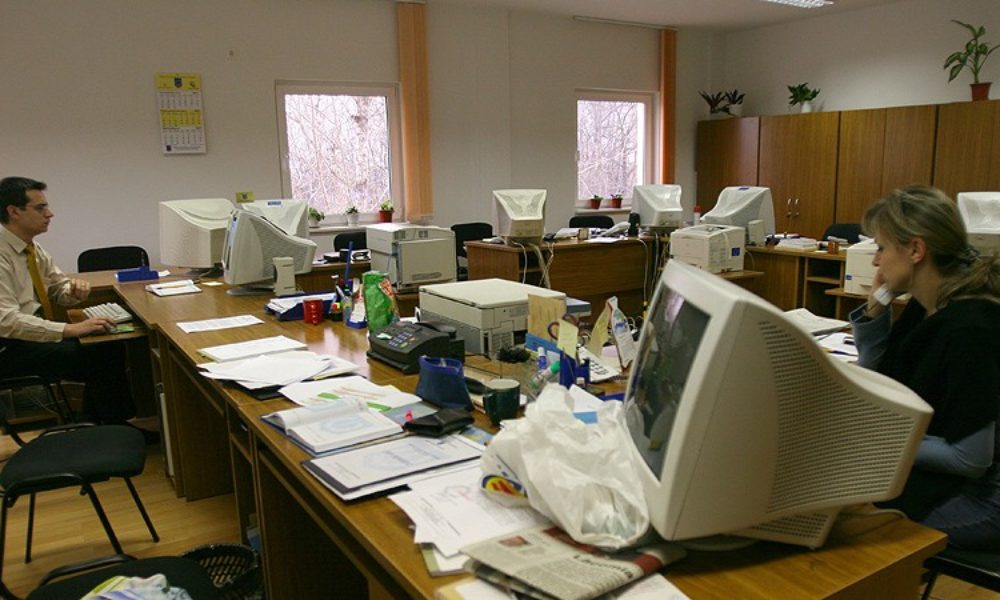Santorini: The BBC and the probability of a powerful explosion

Perched on the steep slopes in Santorini, the world’s world -renowned tourism industry generates millions. But under the feet of visitors, the threat of a devastating explosion is simmering, the BBC notes, In his article entitled: « Could a huge explosion destroy a dreamy Greek island? »
The British media recalls that Santorini was created by a giant ancient explosion, which left behind a huge crater and a petal -shaped hoop. Adding that now, for the first time, scientists are researching how dangerous the next big explosion could be.
« Could a powerful explosion destroy Santorini? »
The BBC News spent a whole day on the British royal RRS Discovery research vessel, participating in the search for data.
Picture of BBC
RRS Discovery is a world -class research boat based on Southampton. Just a few weeks before the mission, almost half of the 11,000 Santorini residents had left the island for security reasons, amid a barrage of earthquakes. « It was a harsh reminder that under the white villages with the restaurants round, the Airbnb villas with the jacuzzi and the vineyards on volcanic soil, two tectonic plates were rubbed in the earth’s bark, » the BBC notes.
Professor Isobel Yeo, an expert in the extremely dangerous submarine volcanoes from Britain’s National Oceanographic Center, is led by the mission. About two -thirds of the volcanoes in the world are under the sea, but few of them are watched.
« It’s a bit like ‘away from the eyes, away from the mind’, when we are going to understand their danger, compared to more famous volcanoes such as Vesuvius, » he says on the deck, while two engineers download a barbarian robot to the car.
This research, which begins so shortly after earthquakes, will help scientists to understand what kinds of seismic activity could indicate that a volcanic explosion is imminent.
The latest explosion in Santorini occurred in 1950, but even in 2012 there was a « turbulence », reminded Isobel Yeo: a lava was channeled into the volcanic chambers and the island « inflated ». Underwater volcanoes, he adds, « are capable of very large, very devastating explosions. »
« We may get a false sense of security when we get used to small bursts and assume that the next will be the same – but it may not be, ”he stresses.
The eruption of the Hungarian Hunga Tonga in 2022 in the Pacific was the strongest underwater explosion ever recorded, causing a tsunami in the Atlantic and thrust waves to the United Kingdom. Some islands in Tonga were so fierce that their inhabitants never returned.
300 meters below the feet of scientists on the ship, the hot vapors sprinkle. The seabed cracks turn the surface of the sea into a bright orange world of rocks and gas clouds.
In a BBC video, the Santorini volcanic craters seem to foam as scientists explore the seabed.
« We know more about the surface of some planets than about what is down there, » commented Isobel Yeo.
The robot descends to the seabed to collect liquids, gases and rocks. These vaps are hydrothermal – that is, hot water is reaping from cracks – and often form near volcanoes.
That is why Isobel Yeo and 22 scientists from all over the world are on board for a whole month.
To date, no one has managed to determine if a volcano becomes more or less explosive when the seawater of these vapors is mixed with magma.
« We are trying to map the hydrothermal system, » explains Isobel Yeo. « It’s not like you make a map on land. We need to see in the earth, « he says.
Discovery examines the Caldera of Santorini and sails to Columbus, the other large volcano in the area, about 7 kilometers northeast of the island.
The two volcanoes are not expected to explode immediately – but it’s just a matter of time.
The mission will create databases and danger gear gear for civil protection, as explained by Professor Friday Nomikou, a member of the Government Crisis Management Team that met daily during the earthquakes.
She comes from Santorini and grew up listening to stories about old earthquakes and explosions from her grandfather. The volcano, he says, inspired her to become a geologist.
« This research is extremely important because it will inform residents about how active the volcanoes are and will map the areas that will be prohibited from approaching an explosion, » he notes.
The venture will reveal which parts of the seabed around Santorini are the most dangerous, he adds.
These missions are extremely expensive, so scientists work in 12 hours shifts, day and night.
Professor John Jameson, from Memorial University in Canada, shows the BBC volcanic volcanic rocks extracted from the slits. « Don’t catch that, » he warns. « It’s full of male. »

Volcanic rocks collected from the seabed from the underwater robot
Showing another meringue -like rock in shades of black and orange with a coating reminiscent of gold dust, he explains: « This is a real mystery – we don’t even know what it is. »
These rocks tell the story of liquid, temperature and materials in the volcano. « It’s a geological environment completely different from most – it’s really exciting, » he says.
But the « heart » of the mission beats in a dark container on the deck, where four people look at screens mounted on a wall.
With a lever that would fit into a gaming console, two engineers handle the underwater robot. YEO and Law exchang the theories about what a lake of liquid found that found the robot.
« We do science for people, not for scientists. We are here to make people feel safe, « says Mrs Law.
The recent earthquake crisis in Santorini has highlighted how exposed the islanders are to geological threats – and how dependent the tourism economy is.





:format(webp)/s3/static.nrc.nl/images/gn4/stripped/data133212425-ae69bf.jpg)

